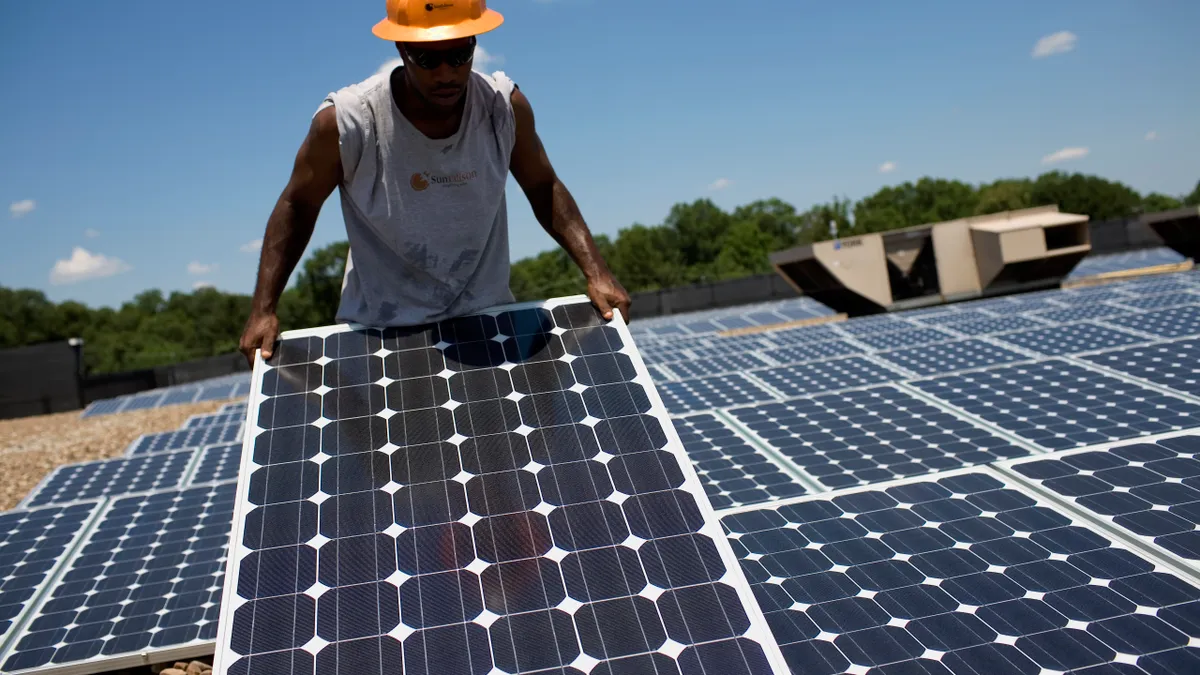Dive Brief:
- New Hampshire utilities and solar companies each filed proposals for a settlement over future distributed solar compensation and rate design.
- Both proposals outline a series of compensation rates for rooftop solar owners, establish time-of-use rate pilot projects and advance non-bypassable charges for solar customers. The solar proposal would cut the distribution credit paid for exported energy by 50% in 2019, while the utility plan would eliminate it altogether.
- The proposals differ on how customers would be allowed to "net" solar credits. Solar interests proposed monthly netting of credits on utility bills, while the utility plan would promote instantaneous netting, which would credit excess energy from rooftop solar users at a rate slightly lower than retail rate at the moment it's exported.
Dive Insight:
New Hampshire is the latest of states where solar companies and utilities are coming to the table with a compromise over net metering rates —the policy that credits rooftop solar users for the export energy they send to the grid.
In 2016, the legislature directed the New Hampshire Public Utilities Commission to come up with an alternative tariff to net metering. Utilities and the Office of the Consumer Advocate filed proposals in December 2016, but a consultant for the PUC staff pushed for more data from utilities before regulators arrived at a decision.
Last week, both sides filed separate settlement proposals that outline future compensation rates for solar users as the New Hampshire Public Utilities Commission (PUC) continues with its proceeding over future solar tariffs.
The proposals found a lot of common ground, mainly in proposing time-of-use rate pilot projects, reducing the distribution credit paid for exported solar energy from residential arrays, and revising how credits are netted.
In the original policy, rooftop solar users could net credits yearly at the retail rate (which is $0.17/kWh in New Hampshire), banking them for later use. Under the utilities' proposal, the distribution credit available for exported generation would be erased entirely, while customers are only credited for the excess energy they generate, along with a transmission credit.
Solar interests, on the other hand, would only gradually phase down the distribution credit for exported energy. For instance, in 2017, the distribution credit would be trimmed to 75% and onward until 2019, where it would reduced to 50%. Customers would net the credits monthly, instead of at the moment of export as outlined in the utility proposal.
Utilities also proposed keeping the original application fees for interconnection requests. Both sides also agree to keep users who sign up under the proposed tariffs on the rates until December 31, 2040.
In addition to these changes, solar companies and utilities also agree to a value of distributed energy resources study (VDER) to inform future rate cases. The utilities also agreed to annually provide data related to net-metered systems.
The settlements were filed an ongoing solar rate design docket (DE 16-576). If approved, New Hampshire will join Colorado, New York and most recently, Arizona, for proposing settlements in order to bypass normally pernicious proceedings. However, unlike Arizona, the settlement in New Hampshire came before a decision passed for the alternative tariff.














